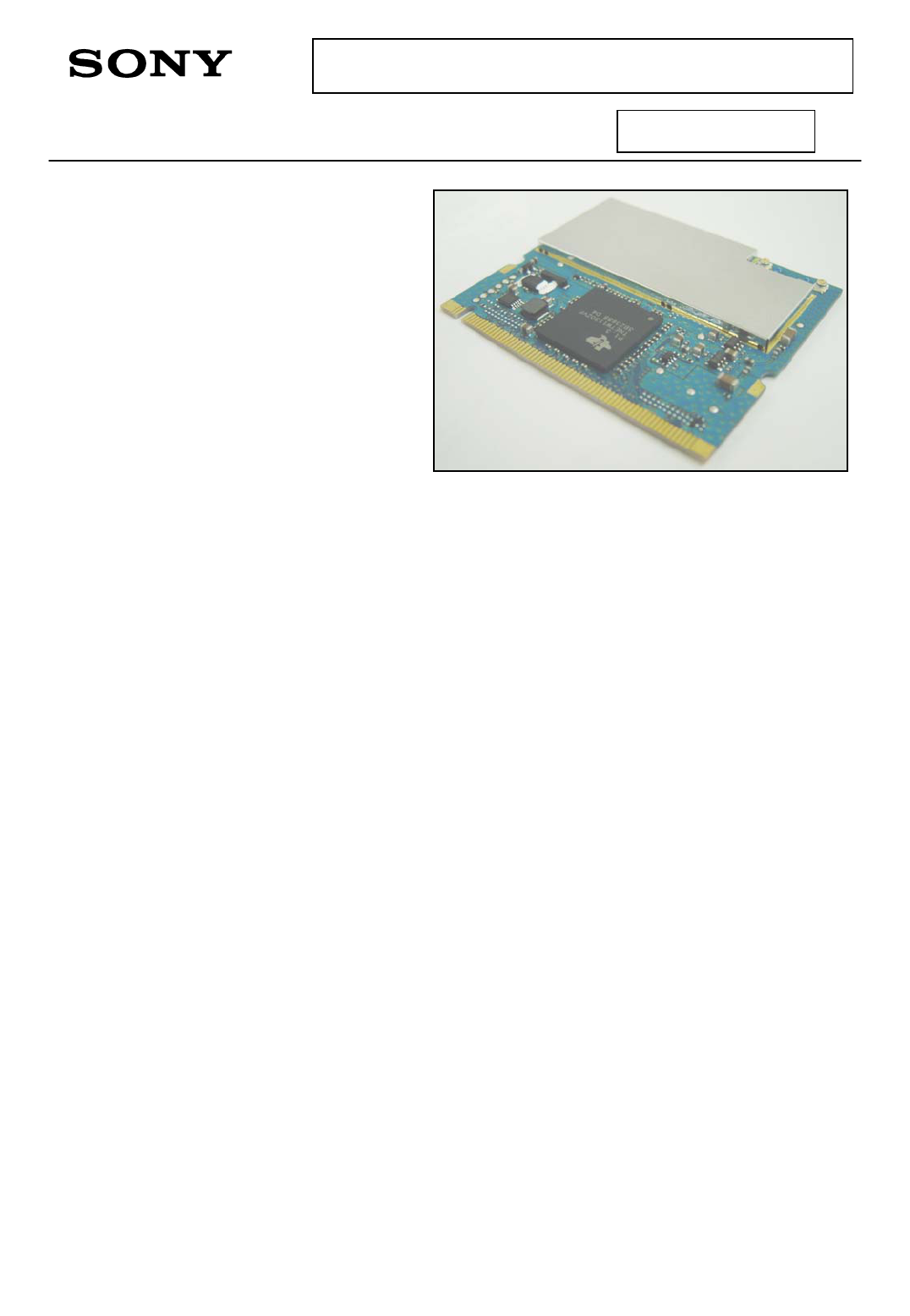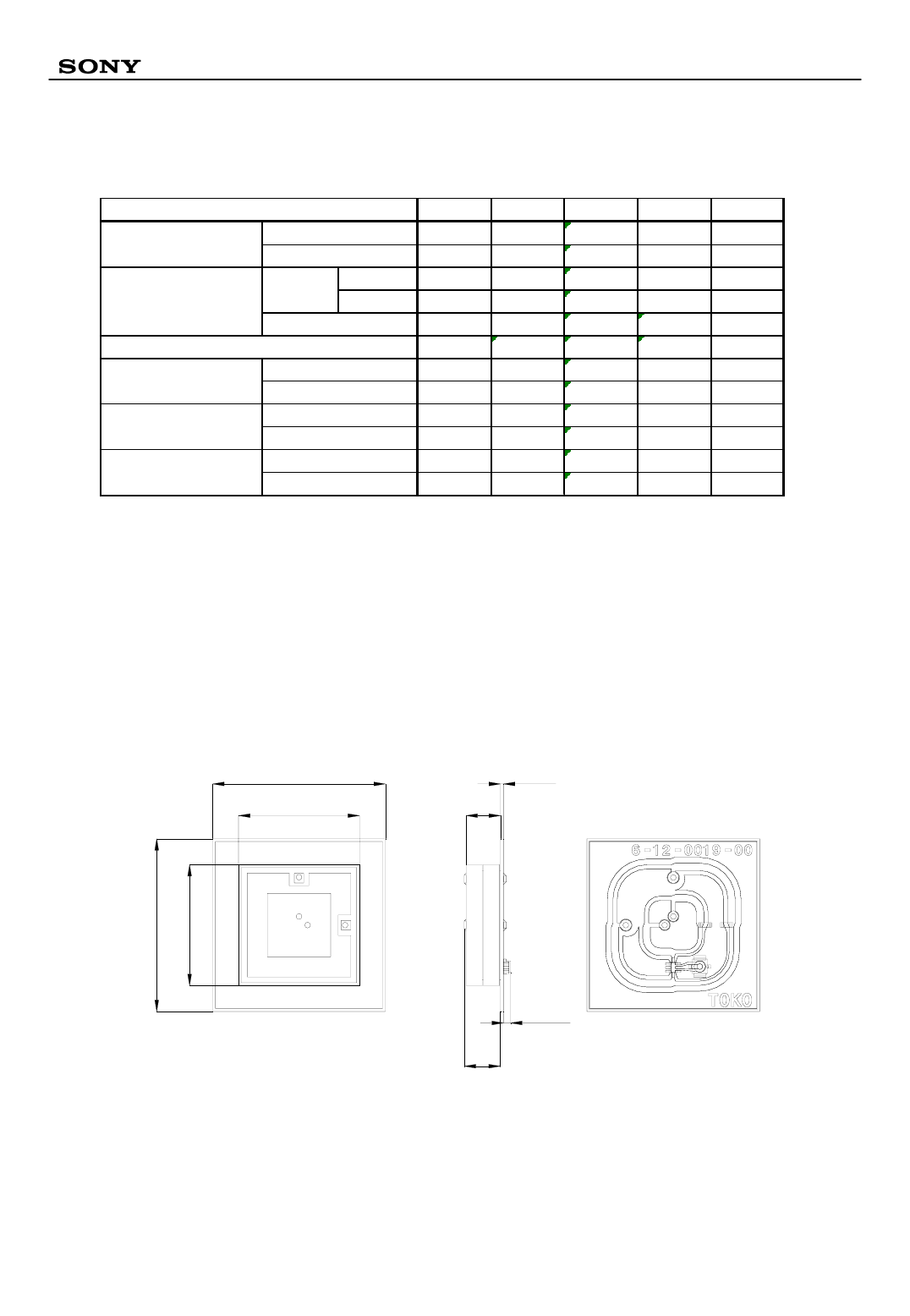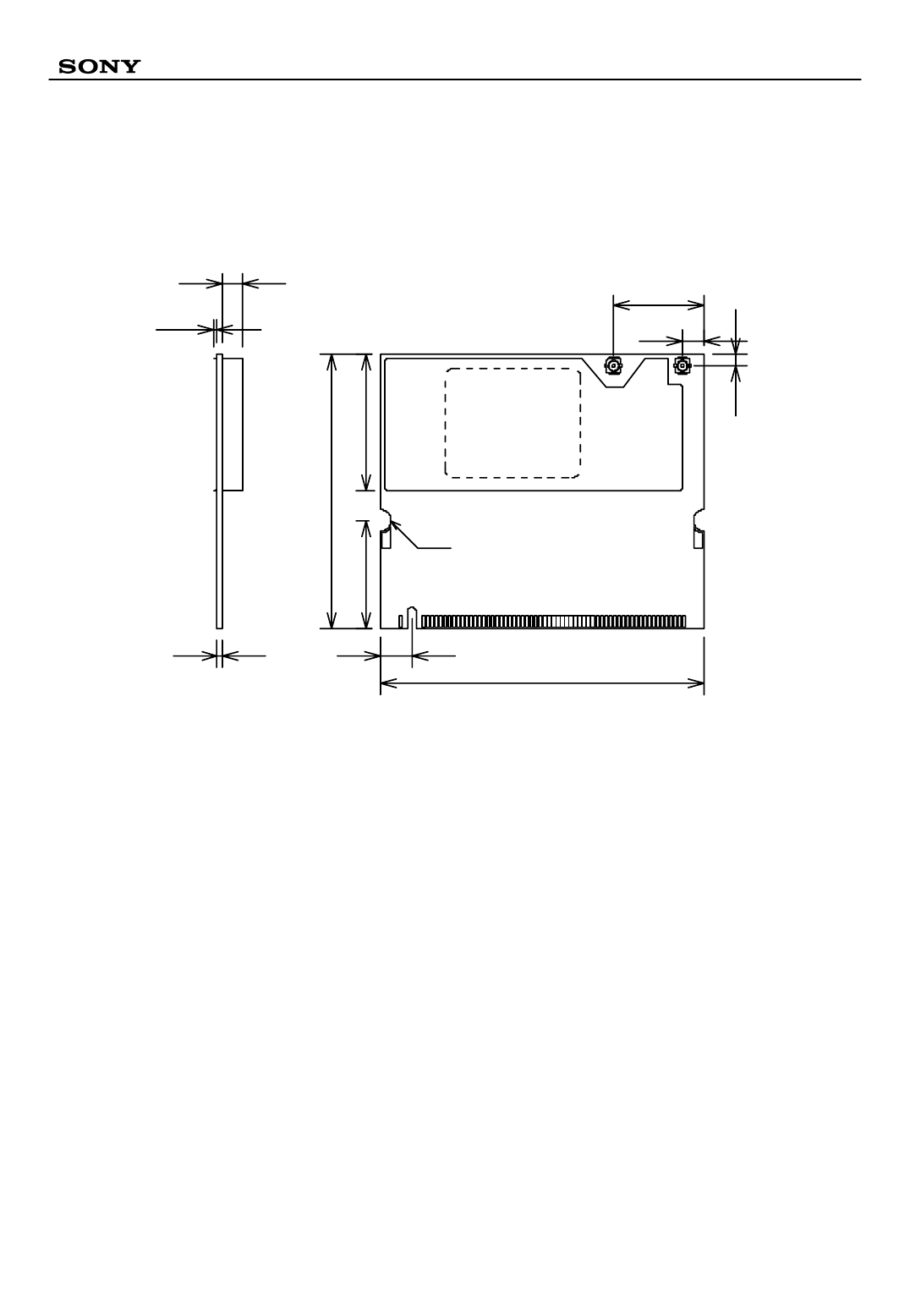Sony Group IRF302U 2.4GHz/5GHz Band Wireless LAN Transceiver User Manual Manual for IRF302U
Sony Corporation 2.4GHz/5GHz Band Wireless LAN Transceiver Manual for IRF302U
Contents
Manual for IRF302U

-1-
IRF302U
PRELIMINALY
2.4GHz/5GHz Band Wireless LAN Transceiver Unit
General Description
IRF302U, Dual band triple mode miniPCI
Wireless LAN module, is compliant with
802.11a/b/g standard.
IRF302U is designed for AV transmission, and
it’s high performance enable 54Mbps high-bit
data rate communication.
Feature
- Support QoS
- Hardware-Based MAC Access Protocol
- Low packet error rate
Specifications
- Host Interface : Mini PCI Standard 1.0
- Standard : IEEE802.11a/b/g compliant
- Radio Signal Type : Direct Sequence Spread Spectrum (DSSS)
Orthogonal Frequency Division Multiplexing (OFDM)
- Wireless Data Rate : 802.11b=1/2/5.5/11Mbps
802.11g/a=6/9/12/18/24/36/48/54Mbps
- Frequency Band : 2400-2483.5MHz / 5150-5350MHz / 5725-5825MHz
- Channel Support : ch1-ch11 / ch34-ch64ch / ch149-ch161
- Data Modulation Techniques : BPSK (1Mbps), QPSK (2Mbps), CCK (5.5/11Mbps)
OFDM (6/9/12/18/24/36/48/54Mbps)
- Operating Range : 660ft (Outdoor, Line of sight)
100ft (Indoor)
- Media Access Protocol : Ad-Hoc (Peer-to-Peer)
Infrastructure
- Security : WEP (Key Length 40/128/256bit) / AES / WPA (PSK)
- Power Voltage : 3.3V (+/- 5%)
- Dimensions : 59.6 x 50.7 x 3.3mm
- Weight : Approx.12g
- Operating Temperature Range : -0C to +50C
Sony reserves the right to change products and specifications without prior notice. This information does not convey
any license by any implication or otherwise under any patents or other right. Application circuits shown, if any, are
typical examples illustrating the operation of the devices. Sony cannot assume responsibility for any problems
arising out of the use of these circuits.

-2-
IRF302U
NOTIFICATION
This equipment has been tested and found to comply with the limits for a Class B digital device, pursuant to
Part15 of the FCC Rules. These limits are designed to provide reasonable protection against harmful
interference in a residential installation. This equipment generates, uses, and can radiate radio frequency energy
and, if not installed and used in accordance with the instructions, may cause harmful interference with radio
communications. However, there is no guarantee that interference will not occur in a particular installation. If
this equipment does cause harmful interference to radio or television reception, which can be determined by
turning the equipment off and on, the use is encouraged to try to correct the interference by one or more of the
following measures:
Reoriented or relocate the receiving antenna.
Increase the separation between the equipment and receiver.
Connect the equipment into an outlet on a circuit different from that t which the receiver is connected.
Consult the dealer or an experienced radio/TV technician for help.
FCC WARNIG
Changes or modifications not expressly approved by the party responsible for compliance could void the user’s
authority to operate the equipment.
For customers in the United States
This product contains mercury. Disposal of this product may be regulated if sold in the United States.
For disposal or recycling information, please contact your local authorities or the Electronics Industries
Alliance (http://eiae.org).
This device complies with Part 15 of the FCC Rules.
Operation is subjected to the following two conditions:
(1)This device may not cause harmful interference,
and
(2)This device must accept any interference received, including interference that may cause undesired operation
*This transmitter must not be co-located or operating in conjunction with any other antenna or transmitter.
*When using the unit with 802.11a (5GHz), use in doors.
FCC Radiation Exposure Statement:
The available scientific evidence does not show that any health problems are associated with using low power
wireless devices. There is no proof, however, that these low power wireless devices are absolutely safe. Low
power Wireless devices emit low levels of radio frequency energy (RF) in the microwave range while being
used. Whereas high levels of RF can produce health effects (by heating tissue), exposure to low level RF that
does not produce heating effects causes no known adverse health effects. Many studies of low level RF
exposures have not found any biological effects. Some studies have suggested that some biological effects
might occur, but such findings have not been confirmed by additional research. IRF302U has been tested and
found to comply with the Federal Communications Commission (FCC) guidelines on radio frequency energy
(RF) exposures. The maximum SAR levels tested for IRF302U has been show to be 0.87 W/kg at Body.

-3-
IRF302U
Electrical Characteristics
Vdd=3.3V, Ta=25C
Symbol Min Typ Max Units
Output power Pout2 - 20 - dBm
Pout5 - 18 - dBm
Supply current Tx 2.4GHz Iddtx2 - 650 - mA
5.2GHz Iddtx5 - 760 - mA
Iddrx - 370 400 mA
ftol -10 0 +10 ppm
Modulation Accuracy EVM2 - 4.3 - %
(64QAM) EVM5 - 5.0 - %
Sensitivity Rx_Sens2 - -71 - dBm
Rx_Sens5 - -70 - dBm
Packet Error Rate PER2 - 0 - %
(-65dBm input)PER5 - 0 - %
Parameter
Center Frequency Tolerance
2.4GHz
5.2GHz
Rx
2.4GHz (54Mbps)
5.2GHz (54Mbps)
2.4GHz (54Mbps)
5.2GHz (54Mbps)
2.4GHz (54Mbps)
5.2GHz (54Mbps)
Symbol Min Typ Max Units
Output power Pout2 - 20 - dBm
Pout5 - 18 - dBm
Supply current Tx 2.4GHz Iddtx2 - 650 - mA
5.2GHz Iddtx5 - 760 - mA
Iddrx - 370 400 mA
ftol -10 0 +10 ppm
Modulation Accuracy EVM2 - 4.3 - %
(64QAM) EVM5 - 5.0 - %
Sensitivity Rx_Sens2 - -71 - dBm
Rx_Sens5 - -70 - dBm
Packet Error Rate PER2 - 0 - %
(-65dBm input)PER5 - 0 - %
Parameter
Center Frequency Tolerance
2.4GHz
5.2GHz
Rx
2.4GHz (54Mbps)
5.2GHz (54Mbps)
2.4GHz (54Mbps)
5.2GHz (54Mbps)
2.4GHz (54Mbps)
5.2GHz (54Mbps)
Antenna
- Model Name : SDA2452A
-Type : Patch
- Gain : 2.4GHz_Band : -1.0dBi(Typ)
5GHz_Band : +2.0dBi(Typ)
- Connector Type : U.FL
20.0
30.0
20.0
30.0
1.25
6.3 ±0.2
0.6
6.0

-4-
IRF302U
Dimension
0.6
2.3
16.7
4
1.0
59.6
5.8
20 25.3
50.7
2-R2
3.6